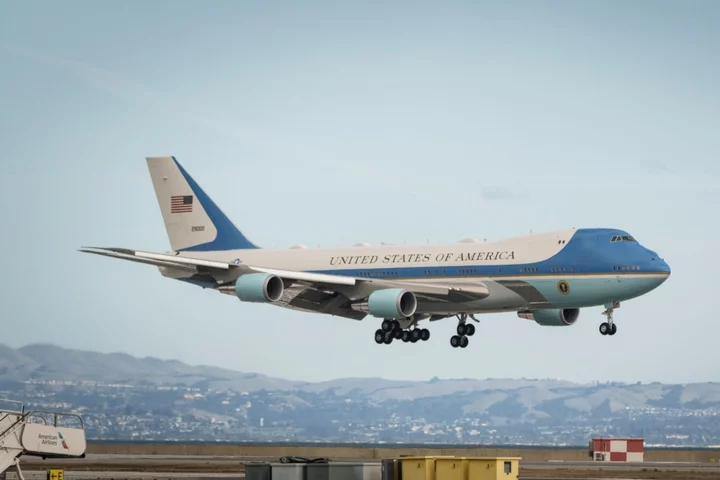The US Air Force is reevaluating the schedule for delivery of the two new planes for the presidential fleet, which may mean more delays for the troubled project that already has saddled contractor Boeing Co. with $2.4 billion in losses.
In addition to reviewing the timeline for delivery of the specially equipped planes — known as Air Force One when the president is on board — the Air Force is evaluating whether at least two current major milestones are still on track.
The first is the “power on” of the first aircraft to begin testing electrical, pneumatic and hydraulic systems. It was planned for last month under a prior schedule but is currently set for May of next year. The second is an initial flight, now pegged for next November instead of this month.
The project to convert two 747 jumbo jets has become a money pit for Boeing because of complications in delivering on the fixed-price contract that it signed during the Trump administration.
“We are currently assessing the delivery schedules and will provide updates as soon as we have more information,” Air Force spokeswoman Ann Stefanek said in an email. “At this time, we do not have any specific data on potential extensions beyond what was outlined” last year.
Earlier: Boeing’s Losses on New Air Force One Jets Keep Ticking Up
For now, the official Pentagon schedule still calls for the delivery of the first plane in September 2026 and the second in February 2027. Both dates reflected delays of about two years from the original contractual dates for the planes, which are designated VC-25B. The current delivery dates — as well as the “power on” and first-flight schedules — were reset in June 2022 during a major Pentagon review.
After delivery, it would still take months more of certifying maintenance and support functions before the president and other top officials could switch from their current aging planes to the new ones.
In October, Boeing announced a third-quarter charge of $482 million at its defense unit, bringing the total associated wth Air Force One to $2.4 billion.
Chief Executive Officer Dave Calhoun told analysts that “results were impacted by higher estimated cost on the VC-25B program. We are maturing through this build process, incorporating engineering changes to better support the installation process, and we resolved important supplier negotiations over the course of the quarter.” He said “none of these items will impact the performance and capability of the end product.”
Calhoun predicted that once the “power on” and first flight milestones are achieved, there will be a “significant derisking” of the program moving through 2025 and 2026.
Asked the Air Force’s current level of satisfaction with Boeing’s Air Force One performance, Stefanek said “we continue to work with Boeing to address concerns and mitigate schedule delays as much as possible, and we are closely monitoring the situation.”
Boeing said in a statement that “we continue to make steady progress on this program, and we are closely working with our customer to assess and mitigate risk to the delivery schedule.”
One more potential complication: If Donald Trump reclaims the presidency in next year’s election, he may renew his insistence on redesigning the planes’ distinctive livery from its traditional blue-and-white to a red, white and blue color scheme he proposed. President Joe Biden rejected the change.
--With assistance from Julie Johnsson.

